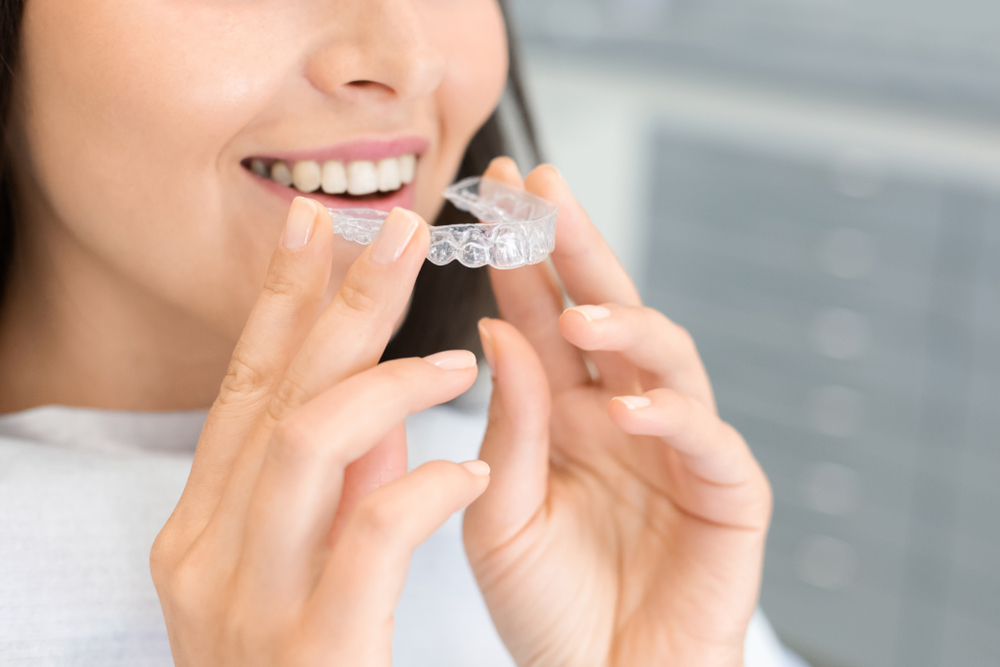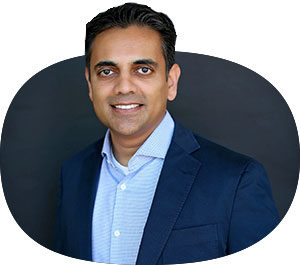
How Often Should You Replace Your Retainer?
It’s exciting when the braces come off or you throw your last set of clear aligners in the trash. You’ve successfully finished your orthodontic treatment and now have the straight and healthy smile you deserve! Now it’s time to make sure those newly-aligned teeth stay that way for life. How? With a dental retainer. Yes, using a retainer after braces or clear aligner treatment like Invisalign® is a typical for maintaining a new smile.
Many of our patients at The Brace Place have lots of questions when it comes to this next step in their orthodontic journey. So in this post, we’re sharing all you need to know about wearing a retainer, including the answers to one of the biggest questions we get: How often should you replace your retainer?
But before we get to that one, let’s cover the basics of retainer-wearing to make sure you’re starting off on the right foot. We’ll first answer:
- What’s a retainer?
- How long do you wear retainers?
- How often should you replace a retainer?
What’s a retainer?
Simply put, a dental retainer/orthodontic retainer is an orthodontic appliance used after braces or clear aligner treatment to help maintain the new alignment of your teeth. After all, you want your new smile to last a lifetime, right? In the immediate months after you’ve finished with orthodontic treatment, a teeth retainer after braces or Invisalign® helps your teeth settle securely in their new positions after months of shifting and working hard. In the long term, wearing a retainer prevents your teeth from moving back, which happens naturally as your body grows and changes. Most orthodontists —Dr. Patel, included — offer three retainer options for using after orthodontic treatment. The one you use will depend on your orthodontic history and your orthodontist’s examination of your teeth.
Essix retainer: this is a retainer that many people are familiar with. It’s entirely plastic, covers your entire dental arch, and is removable.
Hawley retainer: this retainer is made up of an acrylic part that sits up against your palette, and a wire that sits against your teeth to hold them in position. A Hawley retainer is removable.
Permanent retainer: Attached to the lingual (tongue) side of your teeth, a permanent retainer is just that — permanent. A thin wire is bonded to the back of your teeth to maintain their alignment. Because it’s on the back side of your teeth, it’s virtually invisible. But even though it’s hard to see, you do have to pay special attention to brushing and flossing the backs of your teeth since food debris and plaque can collect around the wire.
Teeth retainers are also sometimes used on their own because they can help correct many mouth issues. In other words, they’re not only used for smile retention after braces or Invisalign®. Retainers can also be used for:
Fixing small gaps in teeth: Sometimes orthodontists recommend them for addressing small gaps in teeth if they can do the job instead of braces or clear aligners. In this case, a retainer will be used to both close small gaps and maintain your teeth’s new spacing once the gaps are closed.
Correcting mouth issues: Certain retainers are used to help correct issues that might otherwise lead to jaw or teeth misalignment. For example, if your child has tongue thrust, a special retainer called a crib or tongue cage retainer can be used to train the tongue to rest against the palate, instead of pushing against the front teeth. These retainers can also prevent the tongue from going forward between the front teeth when speaking because they have small metal bars that hang down from the top. Correcting tongue thrust can help prevent the need for braces or Invisalign later on. Of course, it goes without saying that the amount of time a child needs to wear a retainer for an issue like tongue thrust depends on the individual case.
Alleviating TMJ: Another use for a retainer is to help alleviate pain in the jaw from TMJ (temporomandibular joint disorder). TMJ pain is typically caused by a misaligned bite and/or teeth grinding (also called “bruxism”). Teeth grinding puts stress on the temporomandibular joints — the joints that connect your lower jaw to your skull. This stress can affect the joints themselves and the surrounding muscles and ligaments, causing jaw pain or headaches. A retainer prevents your top and bottom teeth from touching so that you can’t grind your teeth.
How long do you wear retainers?
The length of time you wear your retainer will be prescribed by your orthodontist, but most often, it’s forever. At The Brace Place, Dr. Anand Patel will examine your teeth after you’ve finished wearing your braces or Invisalign® and determine what your dental retainer schedule will look like. Initially, many patients have to wear their retainer 24 hours a day — for about 4-6 months. They can usually transition to only wearing their retainer at night once Dr. Patel has given the thumbs up. On the other hand, other patients are cleared for night-time retainer wear only right from the start. You’ll see that just like braces or Invisalign®, retainer schedules are different for everyone. As for the long haul, adults typically have to wear their retainers indefinitely, as we mentioned, while teens might be able to stop wearing their retainers after about 10 years.
How often should you replace a retainer?
Knowing you have to wear a dental retainer for the rest of your life, the next question you might have is, “How often should you replace a retainer?” Typically, you’ll have several retainers over your lifetime, and how often you replace them depends largely on two things: the kind of retainer you have, and your regimen around caring for your retainer. Of the removable retainers, Hawley retainers typically last longer than Essix retainers. And permanent retainers last longer than the removable ones since they’re attached to your teeth.
In terms of caring for retainers, we recommend being gentle so you don’t have to replace them prematurely. Here are some helpful retainer instructions for making sure your retainer lasts:
- Take it out when eating or drinking. It’s best to take out your retainer when eating, drinking, and brushing your teeth. Eating with your retainer can put a lot of pressure on the wire of a Hawley retainer, bending or damaging it. And drinking anything other than water with a retainer in — like soda, sports drinks, and flavored water — can discolor your retainer and break down the plastic over time.
- Use your fingers to put it back in. Whether you have an Essix or Hawley retainer, always put your retainer back in your mouth by pushing it onto your teeth with your fingers — don’t bite it into place. A habit of biting down on it can eventually crack or break the plastic.
- Store it to protect it. Make sure to store your retainer in its case when you’re not wearing it so it doesn’t get knocked onto the floor, stepped on, chewed on by pets, lost, or bent out of shape.
- Make sure it fits! A retainer that doesn’t fit properly or feels uncomfortable means it doesn’t maintain the alignment of your teeth like it should; this can affect how long your retainer lasts. A board-certified orthodontist like Dr. Patel will ensure that your retainer fits your teeth properly from the start.
- Don’t fiddle around with it in your mouth. Some patients click their retainer on and off their teeth. This can loosen the retainer and reduce its effectiveness.
- Don’t let it heat up. Leaving your retainer in a hot car or drinking hot drinks while you’re wearing it can warp the plastic.
- Have a backup retainer. Even a few weeks without a retainer can cause your teeth to start shifting back. So having an extra orthodontic retainer means that if your main one gets damaged, you don’t have an interruption in keeping your teeth straight.
So when do I need a new retainer if I’m careful and it doesn’t get damaged? In his 20 years of orthodontics, Dr. Patel has seen that the natural lifespan of a removable retainer is about 5-10 years before it shows signs of needing replacement. Permanent retainers can last decades if cared for properly. However, if your retainer starts to feel like it doesn’t fit snug against your teeth or it’s warped, it’s time to visit your Tulsa and Claremore orthodontist to get your retainer adjusted (if it’s a Hawley retainer) or replaced.
How to clean retainers
Now we can’t end this post about how often you should replace your retainer without including some tips on how to clean them. It goes without saying that a clean retainer is much more pleasant to wear than a smelly, dirty one. Yes, a retainer can start to smell if it’s not cleaned well since it can harbor the same bacteria that collects on your teeth! Here are our suggestions for how to clean your removable retainers on a daily and weekly schedule:
Daily: Brush your removable retainer gently with a soft-bristled toothbrush and a non-abrasive, non-whitening toothpaste whenever you’re also brushing and flossing your teeth. So at least twice a day. This helps get rid of sticky plaque and food debris. Rinse it well with water before putting it back in your mouth or storing it.
Once a week: Soak your retainer in distilled water to keep it fresh. Add some baking soda for extra cleaning power! Alternatively, soaking your retainer in some white vinegar, non-whitening mouthwash, or denture cleaner is effective. However, if used too often, denture cleaner can turn your retainer yellow. There are also some specific retainer cleaning solutions out there, too.
Cleaning permanent retainers:
If you have a permanent retainer, approach your dental hygiene like you’re wearing braces. Be sure to brush and floss the backs of your teeth thoroughly to get any food debris or plaque that’s stuck around the wire, and floss diligently between your teeth and the wire. It may take a few tries and a few special flossing tools to figure out how to floss well, but once you’ve mastered it, it becomes second nature.
Your retainer expert in Tulsa and Claremore, OK
Whether you’re getting a retainer for the first time or looking to replace your retainer, The Brace Place is your go-to orthodontist for expert retainer service. Dr. Anand Patel and his friendly team will help you maintain your confident smile and are always ready to answer any of your retainer questions. Contact us today for a free in-person or virtual consultation!



























